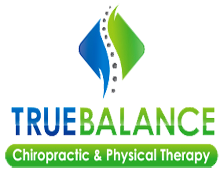Neck pain can obviously appear following a trauma, for example a fall or a car accident. We then speak of whiplash. But most of the time, neck pain will appear for no specific reason. In order to fix the problem and prevent recurrences, it is important to find the cause. Now find the right chiropractor there. Here are some factors that can encourage the onset of a neck ache:
- Poor work posture e.g. non-ergonomic computer workstation.
- Keeping the head tilted for a long time e.g. head tilted to consult your tablet or phone.
- Work with the neck in extended extension e.g. painting a ceiling.
- Sleep on your stomach or with an improper pillow.
- An extended period of stress
The presence of osteoarthritis: osteoarthritis means “wear and tear on the joints”. Everyone will develop some osteoarthritis in the neck, mainly from the age of 50. Osteoarthritis may not cause any pain, but it does make the neck area a little more vulnerable to joint stiffness. Neck pain is treated despite the presence of osteoarthritis.
The Advice of My Physio
In the acute phase, in order to relieve the pain, you can apply ice or heat. Analgesic medication can also relieve you; talk to your doctor or pharmacist. Start moving normally as soon as possible. If the pain doesn’t go away quickly you need to see your physiotherapist.
To resolve a persistent neck problem, exercise. Studies have shown that people who have a low level of physical activity are more likely to have neck problems. Avoid sleeping on your stomach, adjust your work station and learn to manage your stress better. These are all small gestures that could improve your general posture and avoid unnecessary tension.
If you experience weakness, tingling or numbness in the arms, it is important to consult your doctor or physiotherapist in order to resolve the situation quickly.
What Physiotherapy Can Do For You

A cervical sprain is recognized as a pathology that can lead to chronic pain. Early treatment by a physiotherapist or a sports physiotherapist is therefore essential. Your physiotherapist will assess, among other things, your posture, your vertebral mobility and the conduction of your neck nerves. He will then proceed to a personalized treatment which will include advice, methods to relieve your pain, manual techniques aimed at regaining normal flexibility and mobility of the vertebrae in your neck and, finally, posture, stretching and enhancement.
Femoro-patellar syndrome (SFP), also called femoro-patellar syndrome, is the knee overuse injury most frequently treated in our physiotherapy clinics. It consists of irritation between the patella bone and the femur bone, a bit like you have a “bruise” under the patella. It mainly affects young people aged 10 to 30, particularly young girls. However, everyone can suffer.
The femoro-patellar syndrome can cause pain in the front of the knee, often around or under the kneecap (patella). Thus, people affected by SFP will generally experience progressive onset pain during or after their training, playing their sport or going downstairs. This pain will most often appear behind the kneecap or the inner part of the knee. Depending on the degree of irritation, discomfort may even be present in a prolonged sitting position.

